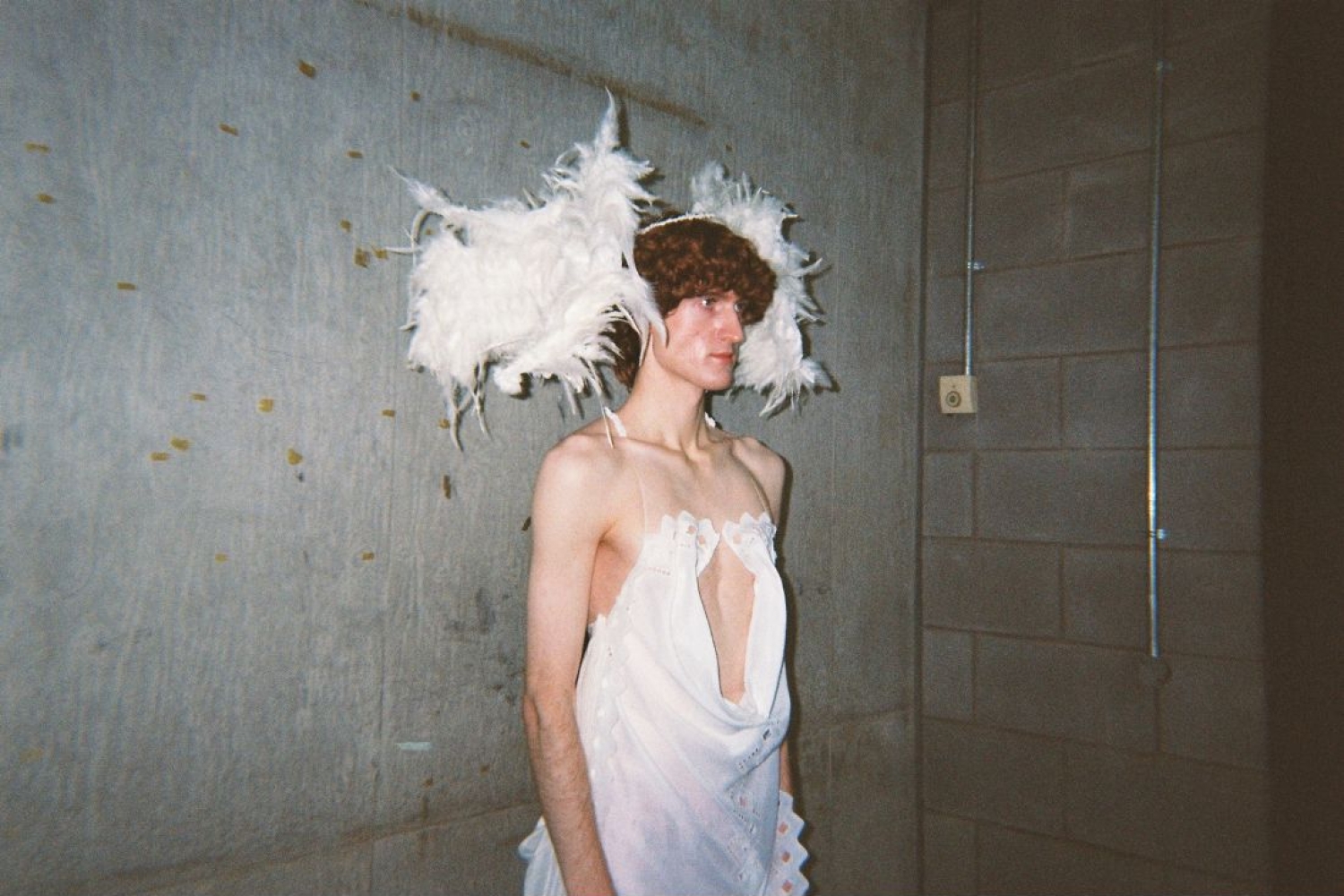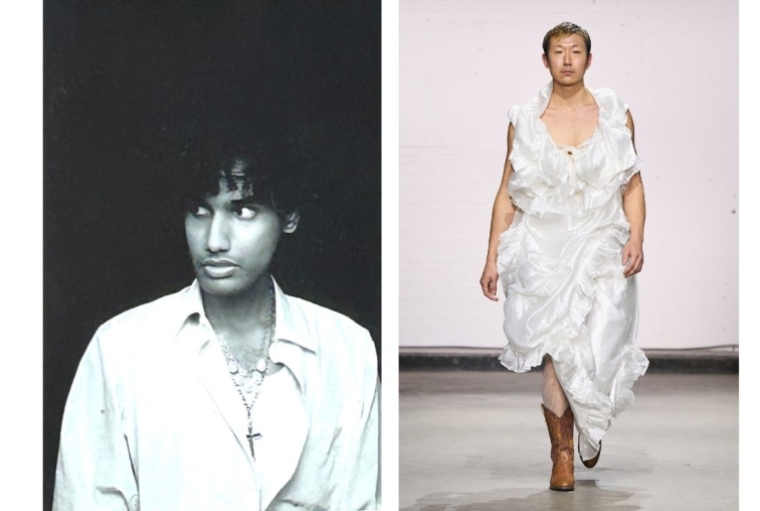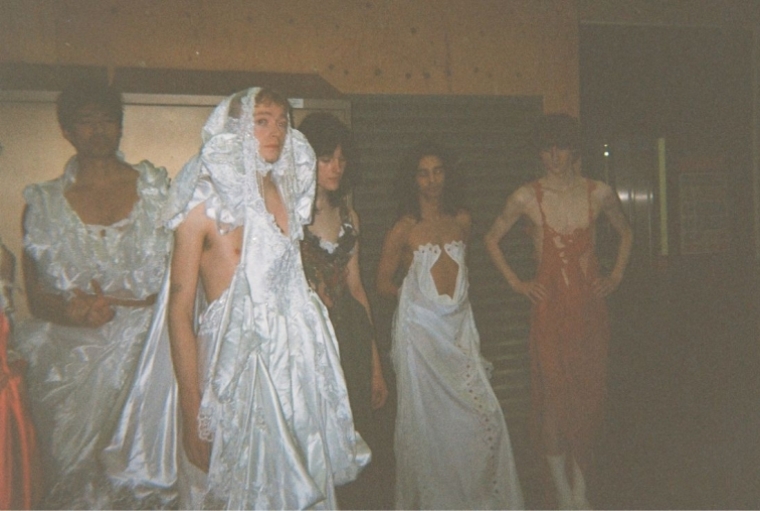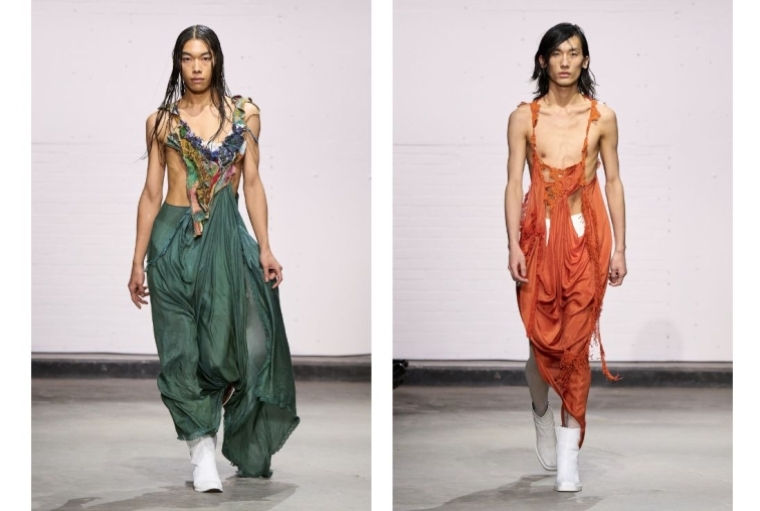

Jude Braganza is the creative force behind Matcha Pret, a fashion label that combines artistry, sustainability, and inclusivity. With a background in design and luxury fashion management, Jude’s journey began during the pandemic when he turned his creative passion into a thriving brand. His work revolves around upcycling vintage pieces and blending gender-neutral design principles to create timeless garments that challenge conventional fashion norms. A proud advocate for craft and culture, Jude’s designs are a celebration of resilience, creativity, and individuality, all while reflaecting his unique Indo-Portuguese heritage.

Jude Braganza
PUSHING UPCYCLING FURTHER
Initially, as they say, necessity is the mother of invention. Matcha Pret started in the pandemic, during the second wave in 2021. At the time, I was working from home as adesigner, but I also had some time on my hands. I really wanted a creative outlet while also making a little money on the side. I always saw a lot of brands doing upcycling, particularly with denim jackets, and I thought upcycling could be pushed even further, even with a constrained budget. So I decided to try it out and put my work out there. The first collection or drop from Matcha Pret was a collection of old band t-shirts, some sourced from my uncle from the 1980s and 1990s, and others I found in Colaba. I took these pieces, cut them up, and made them into corsets. It was my first experience stitching and making a t-shirt into a structured blouse, so to speak. These were all one-of-one pieces, and they sold out in three days. For a small business making its first ever drop, it was a huge confidence boost because I had never sold any of my clothes before; I had only worked under other designers. This time, it was my designs.
After working with the label for a year, I felt more confident about applying to Central Saint Martins for my MA because I knew I could create pieces that bridged art and fashion. I also had a clearer idea of the audience I wanted to address. So I took that risk and applied to one of the most difficult courses to get into. Inshallah, I got in and relocated to London.
My pieces start with menswear and womens-wear pattern making, and I drape them on male bodies and mannequins to ensure they’re flattering on people, regardless of gender or size. I use elastic and open vents to make sure they fit more than just one constricted size. My brand is for everyone.

ROOTED IN INDO-PORTUGUESE HERITAGE
There’s a cultural element to Matcha Pret. The asterisk in my new collection for London Fashion Week represents my Indo-Portuguese heritage. I was raised in a Goan Catholic household, and Goa was ruled by the Portuguese for the longest time. So that’s why my surname is as such. But at the same time, I am deeply in love with India and everything it represents, including its resilience in the face of colonization. I take these stories and make them my own, weaving a world around them.
I think a lot of modern designs focus too much on textile and craft but not enough on the person they want to dress. This can make the garment feel two-dimensional. I try to be a happy middle ground. I use craft in my pieces; some of the patchwork I make myself, while other pieces are made with vintage lace I found at flea markets. For example, one piece has calico patchwork with lace that’s handwoven in England and Eastern European flea market finds.
At the end of the day, it’s about making the person feel empowered and confident, but also paying homage to those who came before us. My goal is always to balance those two things.
There’s also a political aspect to my work. As the world shifts to the right, I want to send out a message of resilience, joy, and defiance. From queer history like Marsha P. Johnson and the Paris ballroom scene to migrants making do with what they have, there’s resilience in finding joy, despite the hardships. I want my clothes to make people happy and celebrate that defiance.


PRESENTING AT LONDON FASHION WEEK
At London Fashion Week, my collection starts with anger and distortion, showing rage, but it moves towards sensuality, neutrality, and eventually ends at a place of joy. You’ll see glamorous silhouettes juxtaposed with menswear elements and machismo. There will be pieces that show off the body, while others conceal it. It’s like a world of its own with different characters and emotions. But one thing I can guarantee is that my clothes always have a whimsical side to them. If I had to describe my work in two words, they would be glamorous and whimsical—and also strange. That’s what you can expect from the collection.
Words Paridhi Badgotri
Date 01.04.2025
